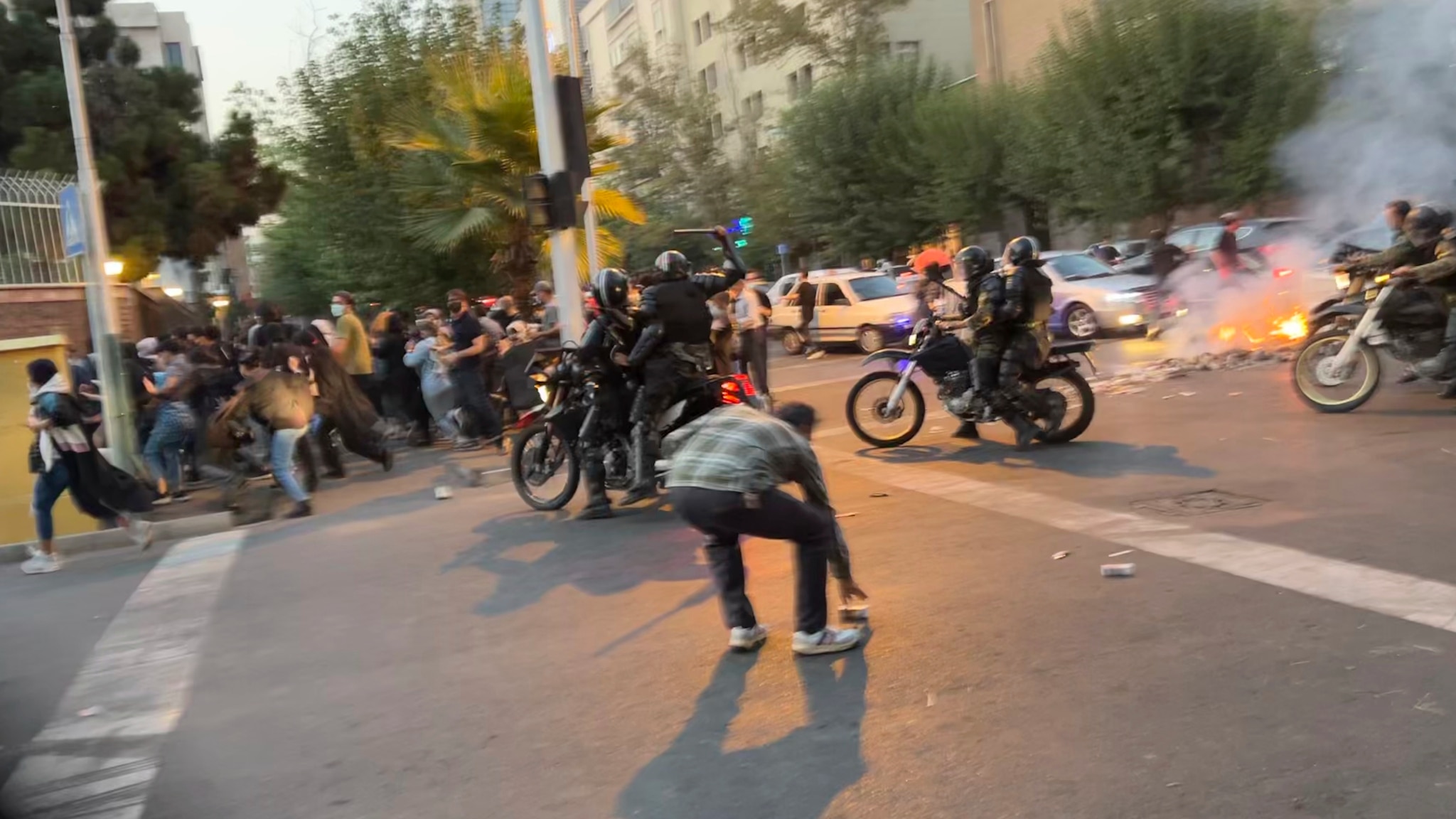Iran has stepped up repression of Kurdish areas in the west of the country as protests sparked by the death of Mahsa Amini rage across the country.
Strikes
in
universities and petrochemical factories
undermine the regime's foundations, in what is not just a revolt of women, but a protest in which those who take to the streets at their own risk, women and men, ask for social reforms and solutions to the crisis economic follow-up to sanctions, rampant poverty and corruption.
For these reasons, the current protest, now in its fourth week, represents one of the biggest challenges for the Iranian theocracy since the 2009 Green Movement.
Activists say riot police shot in
Sanandaj
, the capital of the province of
Iranian Kurdistan
, about 400 kilometers (250 miles) west of Tehran, Amini's provincial city.
A video posted online by a Kurdish group called the Hengaw Organization for Human Rights shows dark streets where snipers are apparently shooting at residential homes.
"In order not to let the protesters out of the house" they say on social media.
Another showed a phalanx of
motorcycle
security forces moving through the streets also in Sanandaj.
"They reportedly broke the windows of hundreds of cars in the Baharan neighborhood."
Iran does not recognize the repression for now.
Amnesty International
criticized the violence.
Meanwhile, oil workers joined the protests at two major refinery complexes on Monday, linking a key Iranian theocratic sector to the unrest.
The Iranian government reiterates that Amini was not mistreated, and that she died of a previous illness, but her family says her body showed bruises and other signs of beatings.
And she is not the only one of her, after her other very young girls have lost their lives in circumstances still to be clarified.
The employees of the petrochemical and oil sector of the crude oil-rich province of Bushehr cross their arms.
But their protest, regional governor Ali Hashemi is keen to point out, has nothing to do with the ongoing riots in the country after Mahsa Amini's death.
What the two protests have in common, however, is their anti-regime nature.
As can be seen from the videos circulating on social media, the workers who took to the streets in the city of Asalouyeh chanted slogans such as "Down with the dictator", in reference to the Supreme Leader of the Islamic Republic of Iran, Ayatollah Ali Khamenei.
'' These workers' strikes have the potential to
paralyze the Islamic Republic
, in particular the energy sector.
After three weeks of revolution, mass strikes in the oil, gas and petrochemical sectors represent a serious existential threat to the regime, "Iranian expert Alireza Nader told Fox News Digital.
According to other analysts "Iran is less dependent on oil as a percentage of GDP than in 1978, but energy exports are still the lifeblood of their economy. Large and prolonged strikes among petrochemical workers could prove fatal for the regime."
The international community and now Europe are calling on the Islamic Republic to end the repression, threatening new sanctions.
After the words of
Annalena Bearbock
, the
British government
led by
Liz Truss
has also announced new sanctions: "as a matter of practice, they will concern the prohibition of any hypothetical travel and the freezing of any assets traceable by the British authorities".
In response, the Iranian Foreign Ministry led by
Nasser Kanani
summoned the British ambassador to Tehran, Simon Shercliff, to challenge the "arbitrary" and "unfounded" sanctions announced by London.
Jake Sullivan
, national security adviser to US President Joe Biden, similarly noted that "the world is watching what is happening in Iran."
“These protesters are Iranian citizens, led by women and girls, demanding dignity and fundamental rights, '' Sullivan wrote on Twitter.
"We stand with them and will hold accountable those who use violence in a vain attempt to silence their voices."
@ranarahimpour
Iranian students without hijab, watching another woman play the violin
Meanwhile, the Adnkronos makes it known that
another Italian citizen
was stopped by the Iranian police in Tehran, while he was shooting a video with a mobile phone, and was then released.
The compatriot, who was in the Iranian capital for a fair together with another Italian, was asked during police interrogations if he was in contact with Western intelligence.
Yesterday, in a reference also to
Alessia Piperno
, the Italian girl arrested in Tehran on 28 September last, the spokesperson for the Iranian Foreign Ministry said: "Iran is a safe country. We ask foreigners who visit it for business or for tourism to respect our laws ".
Five
French
are currently detained, French Foreign Minister
Catherine Colonna
announced on France Inter radio.
Colonna will return to "once again ask for the immediate release of the French detainees".
Meanwhile, in front of the Consulate of Iran in Milan, in Viale Monte Rosa,
the
new work 'The Cut 2'
in solidarity with the struggle of Iranian women signed by AleXssandro Palombo
has returned to view this morning.
The previous one had been removed within 24 hours.
The artist, who had gathered the solidarity of thousands of young Iranians, this time 'raised' the bar and proposes an even more provocative Marge Simpson who shows the middle finger in front of the Iranian representation.
The removal of the mural by AleXsandro Palombo that depicted the protagonist of the cartoon cutting her blue hair had gone around the world.
There is no certainty as to who had ordered the cancellation: "We did not remove it, we had not even noticed it" they replied from the Consulate.
Handle
Murals Marge Simpson in solidarity with Mahsa Amini

